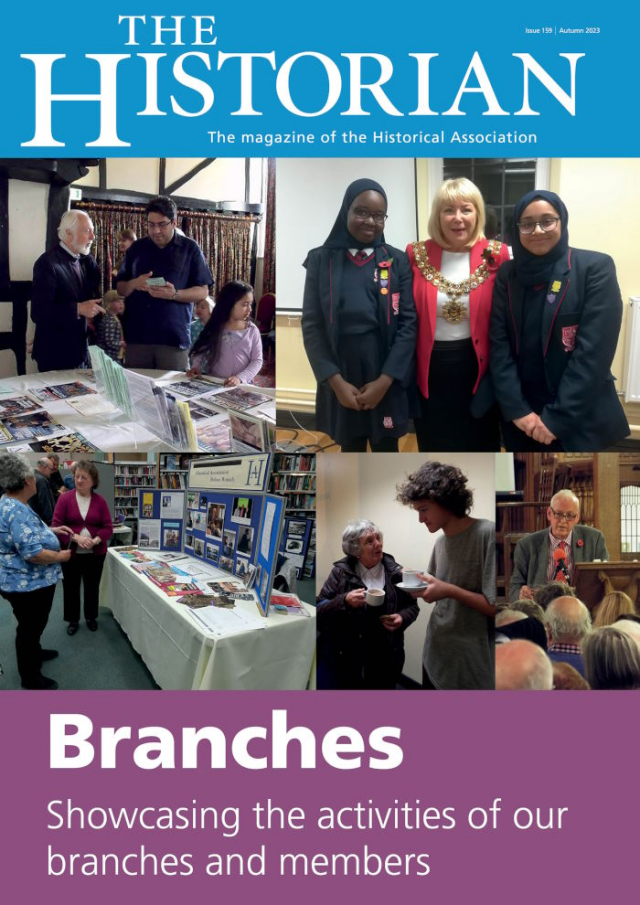The Historian 159: Out now
The magazine of the Historical Association

Editorial: Branches
Read The Historian 159: Branches
Welcome to this Branches edition of The Historian, a regular version of the magazine where many of the articles are based on talks and activities from Historical Association branches across the country. The last Branches edition came out in November 2021 and at that time included reflections on the fact that many local branches were just starting to return to in-person meetings after the Covid pandemic. Two years on, most branches have become accustomed again to offering members regular opportunities for intellectual and social discourse under the same roof. At the same time, the advantages offered by communications technology are still being used effectively by many branches to provide access for members or speakers who are unable to travel to the meeting venue.
The nature of a Branches edition is that the historical subject matter is likely to be more varied than it would be in regular themed editions, such as recent magazines centred on the histories of the United States and music. Despite that, this edition does include some interesting recurring themes. Articles on the Holburne Museum in Bath and the City of Lancaster both examine the desire to accommodate progressive ways of representing history with the need to respect the sensitivities of past events and styles. Elsewhere, the attempts by very diverse historical characters to make sense of rapid changes in the late nineteenth and early twentieth centuries are explored, in articles about Charlie Mitchell, Cornish boatman and male model, and about the Prince Imperial, the exiled son of deposed French Emperor Napoleon III. Covert operations provide a common theme too, in the very different contexts of spies in medieval Europe and the sabotage activities of Z Special Unit in eastern Asia in the Second World War. The latter article was written by a lower secondary school pupil, Ayan Sinha, and was a worthy winner of an HA Young Historian prize. Other articles in this edition discuss the Their Finest Hour project, which attempts to capture objects and memories from the Second World War and, in Forbidden Friendships, there is an examination of the relationship between drinking establishments and gay communities during various historical periods.
As well as articles inspired by branch activities, this edition also includes an interesting article where branch activity itself is the subject matter. The Cambridge branch of the HA has experimented recently with the idea of full ‘History Days’, instead of short monthly meetings in the evenings or afternoons. The article explains and assesses the success of this approach.
A new feature in this edition is an interview with an historical author, which is intended to be a regular section in future magazines. The first interviewee is Nicholas Radburn, author of a recent book on merchants involved in the transatlantic slave trade, who is questioned by editorial board member James Sewry. In addition, there are the regular features of book reviews and letters sent by readers. Please feel free to send us your thoughts on what you read and hopefully enjoy in this Branches edition.

